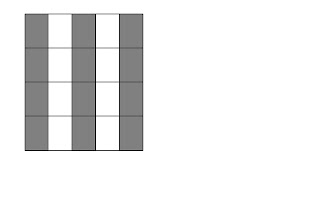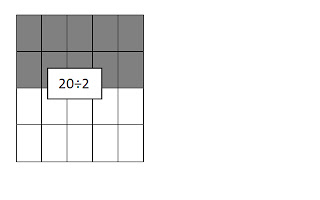The introduction into the world of division from multiplication happens without pause. Within the same unit of study, students are introduced to both situations in an investigation. The only thing that changes between a multiplication and division situation is the unknown variable. In multiplication contexts, students are given the number of groups and the number of items within each group. They must find the total number of items in all. On the other hand, in a division situation, students are given the total number of items and either the number of groups or the number of items in each group. They must find the missing piece of information.
Multiplication Situation
There are 5 bags of muffins. There are 4 muffins in each bag. How many muffins are there in all?
Number of Groups: 5
Number of Items in Each Group: 4
5x4=w
Division Situations
Situation 1:There are 20 muffins. There are 4 muffins in each bag. How many bags of muffins in all?
Situation 2: There are 20 muffins in all. There are 5 bags of muffins. How many muffins are there in each bag?
Situation #1:
Number of Groups: ?
Number of Items in Each Group: 4
Total Number: 20
Equation: 20 ÷ 4 = b
Situation #2:
Number of Groups: 5
Number of Items in Each Group: ?
Total Number: 20
Equation: 20 ÷ 5 = m
Fact Family
Though the context changes, students often see division situations quite the same as the multiplication situation. They write the fact family to see if they know the answer quickly. Some students who think about fact families can solve a problem like this with mental math.
20 ÷ 4 = __
20 ÷ 5 = ___
5 x __ = 20
__ x 4 = 20
If they write the fact family but do not know the answer quickly, they can use repeated addition or skip counting to solve.
Repeated Addition
20 ÷ 4 = ___
4+4+4+4+4 = 20. There are 5 groups of 4 in 20.
20 ÷ 5 = ___
5+5+5+5 = 20. There are 4 groups of 5 in 20.
Skip Counting
20 ÷ 4 = ___
4, 8, 12, 16, 20 (The student skip counted 5 times.)
20 ÷ 5 = ___
5, 10, 15, 20 (The student skip counted 4 times.)
Ratio tables can also be used as a tool in division skip counting to organize a students’ thinking.
Successive Subtraction
Another early division strategy is successive subtraction.
20 ÷ 4 = ___

Array Model
Some students attack division using their knowledge of arrays.
20 ÷ 4 = ___
The student would build an array with 20 square units and then divide that area into groups of 4 square units. When finished dividing, they would count the number of groups they had created.
There are 5 groups of 4’s shaded.
This conceptual knowledge helps students build not only algebraic thinking, but fractions, too. In 4th grade, students study dividing brownies into fractional parts.
Multiplication Clusters
20 ÷ 4 = __
If students don't know how many fours are in 10, they can work with familiar fours. The student, in this example may know that 2 groups of 4 is 8 and 3 groups of 4 is 12, therefore 5 groups of 4 is 20.
(2 x 4) + (3 x 4) = 20
Division Clusters
20 ÷ 4 = ___
20 ÷ 4 can be thought of easily as 20 ÷ 2 = 10 and then 10 ÷ 2 = 5.
This, by no means is an exhaustive list, it simply highlights for you the division strategies which were covered through Closing Session in our third grade classroom during a week and a half of division work. The strategies are meant to build conceptual knowledge. Students are expected by the end of fourth grade to master the traditional algorithm in multiplication and division.




No comments:
Post a Comment